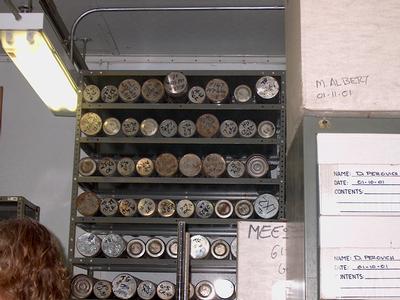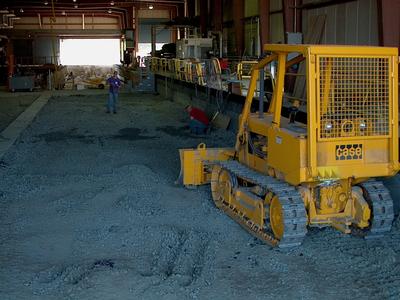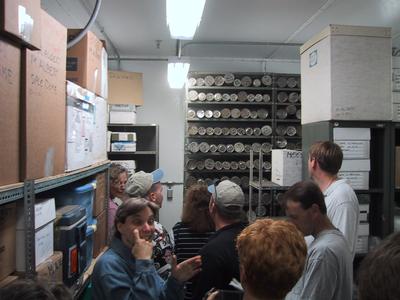8 August, 2001
Into the Freezer .....
BRRRRR!!! Do you have any idea how minus 25 degrees Fahrenheit feels?
I didn't until today when I entered the cold storage facility here
at CRREL. It took about 30 seconds for my body to lose enough heat so
that I began to feel the cold. Then within a few more seconds the
goose bumps appeared and I knew I was ready to get out!! (Of course
walking into the freezer with a short sleeve shirt and shorts didn't
help.) I can only imagine how this temperature would feel after
fifteen minutes with a blistering wind blowing up snow into my face.
I hope to find out when I visit Antarctica.
I am at CRREL this week to receive an orientation in preparation for
my research experience in Antarctica. I am here with 11 other
teachers from across the United States. Six teachers will travel to
Arctic regions such as Barrow, Alaska and the Summit, Greenland, and
six of us will travel to Antarctica. This week, temperatures here at
the border of New Hampshire and Vermont are in the 90's, and today
areas of New England may reach record breaking temperatures of over
100!! It hardly seems like a place to be receiving polar training.
The walk in freezer I referred to is used to store important
scientific samples such as ice cores removed from glaciers in
Greenland. These samples can be removed as needed by the various
researchers here at CRREL. Image 1 below shows these glacial core
samples in metal cannisters in freezer storage. Samples are 3" and 4"
inches wide and one meter long and can be stored almost indefinitely
if temperature is maintained.
Image 2 was taken in a different building at CRREL used to study
frost heaves, bumps and swells that occur along highways as a result
of freezing and thawing occurring beneath the asphalt. In this
photo, workers are preparing a for a test by burying sensors just
beneath the roadway. CRREL is one of four research centers making up
the U.S. Army Engineer Research and Development Center. Other
facilities include research centers for topographical engineering,
construction engineering, and waterways experimentation.
The past few days I have been learning so much about polar regions
and polar research. I have heard presentations on many fascinating
topics such as Arctic cultures, glacial movement, life in Antarctic
soils, and survival strategies. There is so much to learn before I
actually leave for Antarctica. I am not scheduled to depart until
sometime in late 2002 which at first seemed so long to wait, but now
I am beginning to feel grateful to have time to prepare. I will have
to learn more about photography (especially digital), good
journaling, editing video, etc. And of course I want to learn all I
can about Antarctica itself including its geography, climate,
wildlife, glaciers, atmosphere, the people who live and work there,
and so much more. My brain feels a bit like it's on overload, yet
this is all incredibly exciting at the same time.

1. Ice core samples in metal cannisters

2. These men are placing sensors under a laboratory roadway used to simulate highways which are subjected to freezing, thawing, and heavy traffic.

#1 Cold Room (freezer) at CRREL. Notice the metal cylinders on the = shelf which contain glacial ice cores.
Contact the TEA in the field at
.
If you cannot connect through your browser, copy the
TEA's e-mail address in the "To:" line of
your favorite e-mail package.
|
